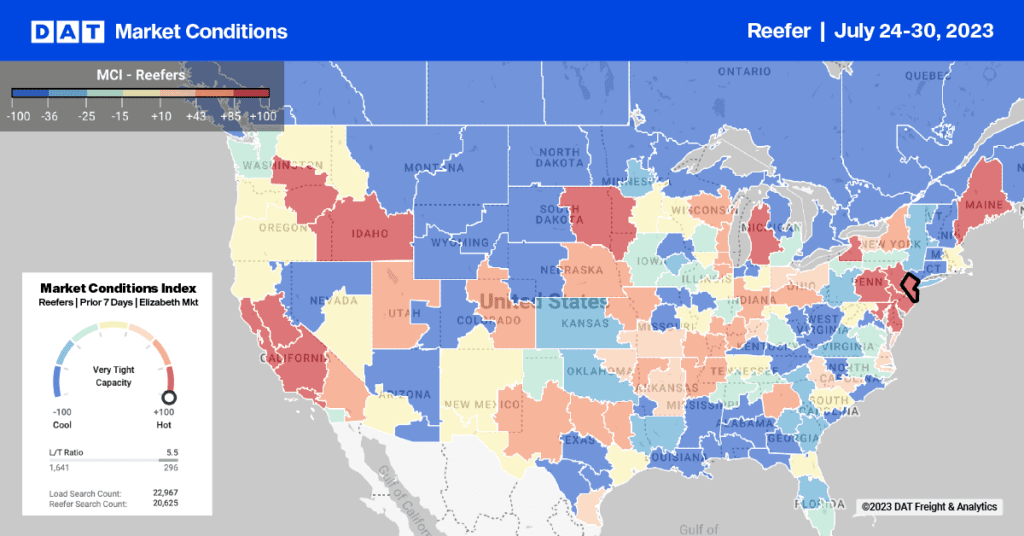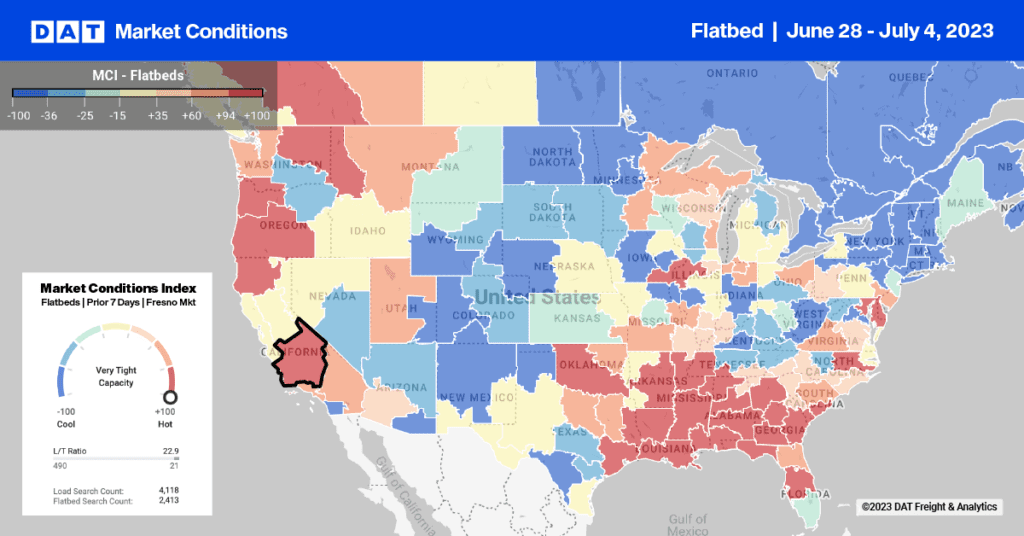November Rates Rise in Post-Storm Surge
Van rates rose 4.8% on the spot market in November to an average of $1.91 per mile including fuel, across the 70 highest-volume lanes. This is a remarkable trend, supported by an atypical surge in freight availability on the spot market.
A few factors are responsible for the unusually high demand: (1) disaster relief and inventory re-stocking after Hurricane Sandy; (2) late-arriving holiday freight, part of a trend toward an extended retail season; and (3) plentiful crops in the late fall — especially potatoes, which are heavy for their size and take up a disproportionate share of capacity relative to their volume or value. (No offense to potato lovers — I’m talking about retail value, not nutritional value.)
Vans Give Back Gains in Early December
On Monday, I was all ready to blog about that atypical increase in van rates, but I got caught up in some other aspects of my job, and I neglected to publish the blog post. It stayed open on my computer desktop, and meanwhile, van rates started dropping all over the country. Now I see that since Monday, the national average rate has dropped $0.03 (1.6%) to $1.88 per mile, including fuel. There was no mid-week change in the fuel surcharge, so all of that decline came from the line haul portion of the rate.
Some key markets have turned very soft. For example, the outbound load-to-truck ratio in Chicago dropped to 0.2 for vans, Indianapolis to 0.7, Columbus 0.8 and Stockton to 0.4. That means that any truck in those markets is going to have a hard time finding outbound loads at any price. Even the remaining hot spots aren’t so hot, as freight availability is almost universally lower this week than last week.
Reefer and flatbed rates are following the same pattern in the first week of December.
This typical fourth-quarter pattern emerged late in the season, because of Sandy and other unusual factors that boosted freight availability through most of November. Now the winter doldrums are upon us, and the chilling effect seems sudden and extreme. I think we will find that the net result, in total loaded miles and dollars, will be simliar to a typical season, as the high November rates will be balanced by low rates in December. We’ll know more in a few weeks.
History in the Making
When I publish comments about a rate trend, it is always based on “history” — what happened last week and last month, as well as what’s typical for the season and conditions. The spot market can move very fast, though, and predicting rate moves can be as much an art as a science. Last week I predicted that the high November rates were aypical and would not be sustained. This week, rates dropped.
This type of rapid change reinforces the need for high-quality, up-to-date information. Your forecast is only as good as your data. I’m patting myself on the back for my predictions, but if you have access to spot market rates in DAT Truckload Rate Index, you would be right here alongside me, saying “I told you so” to the rest of the world.
Now we know what brokers paid this week. What are you seeing out there today? Please comment below.


